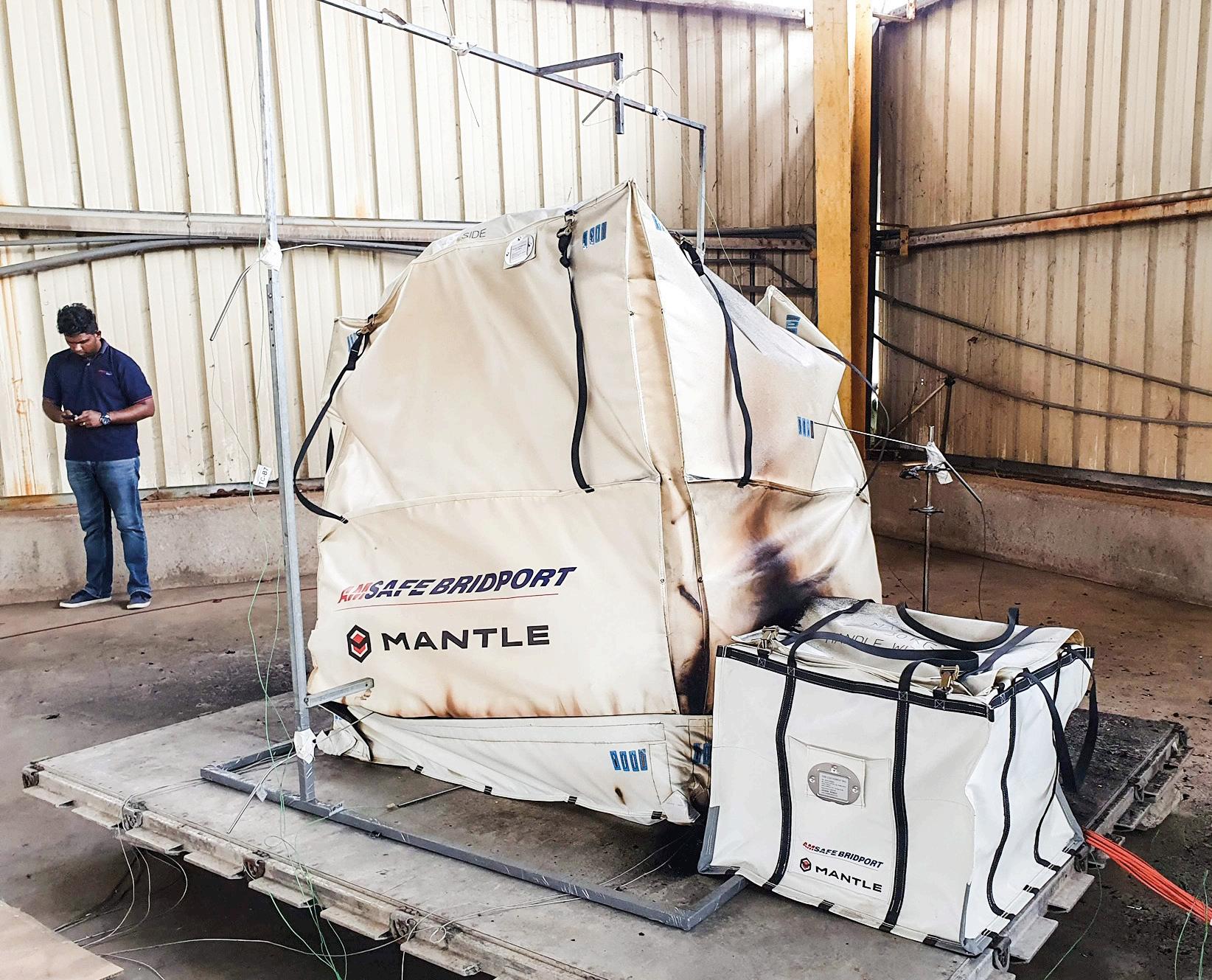
2 minute read
Amsafe FCC passes another test
QSHE manual also referred to a Nitrogen Handling Checklist, but this was not completed prior to the incident.
The terminal’s policy called for a Nitrogen Supply Acknowledgment to be completed by the ship’s chief offi cer and the Vopak PIC prior to supplying nitrogen, stating the different procedures for purging and blanketing. This was not completed prior to the incident. A ‘work instruction’ for liquid cargo handling specifi ed a 2-inch nitrogen hose, though the associated ‘work instruction’ for nitrogen blanketing had no similar specifi cation.
NTSB’s investigation found no fault with the pressure relief valves on the vessel. However, the report notes that, with a 4-inch hose and valves fully open, the terminal could move 250,000 ft³/hour of nitrogen, while the relief valves had a capacity of 17,057 ft³/hour. “Without accurate and ongoing throttling of the nitrogen control valves, the risk of overpressuriation was constant,” the report states.
At the point where the chief offi cer was alerted to low pressure in the tanks, his decision to instruct the pumpman to fully open the nitrogen valve meant that there was no capability to control the fl ow of nitrogen, while at that point there was no communication with the Vopak PIC and the dock’s valve position could not be verifi ed. The incident could have been avoided if, at that point, he had shut down the discharge operation.
Although both the terminal and operator of the vessel had procedures and control measures in place that clearly outlined a nitrogen blanketing operation, the procedures were not followed on the day of the accident, NTSB notes. In particular, the use of a 4-inch nitrogen transfer hose removed the engineered controls designed to limit the fl ow rate. The crew’s failure to consult the Nitrogen Handling Checklist contributed to this error.
NTSB determines that the probable cause of the overpressurisation and cargo tank rupture during offl oading was the failure of both vessel and terminal personnel to follow established policies and procedures for cargo discharge and nitrogen blanketing. Contributing to the casualty was the lack of effective communication between the vessel and terminal personnel and the decision by the vessel’s PIC to continue discharge operations when unable to communicate with the terminal.
NTSB’s investigation report can be consulted in full at www.ntsb.gov/investigations/ AccidentReports/Reports/MAB2014.pdf.
FIRE IN THE HOLD
LITHIUM BATTERIES • TECHNICAL ADVANCES IN FIRE CONTAINMENT SYSTEMS ARE OPENING UP NEW STANDARDS FOR THE TRANSPORT OF LITHIUM BATTERIES BY AIR
AMSAFE BRIDPORT’S MANTLETM fi re containment cover (FCC) has passed another demanding test, becoming the fi rst such unit to undergo a six-hour fi re containment test in a 1 m³ space. The test used 4,800 lithium ion batteries, all at a 50 to 70 per cent state of charge and put into thermal runaway. During the test, internal temperatures reached more than 1,500˚C.
“Mantle is the only product in the world to contain a fi re of this intensity and within such a small space,” AmSafe says.
By reducing risk and improving safety, the Mantle FCC offers airlines the opportunity to carry lithium ion batteries in a range of cargo holds and spaces, effectively creating a greater scope of possibilities to expand existing contracts as well as opening doors to new business.
AmSafe Bridport says it is the fi rst company to achieve C203 certifi cation from TSO for Type 1 FCCs and is now looking to reinforce its position and the leading FCC manufacturer and provider. amsafebridport.com










